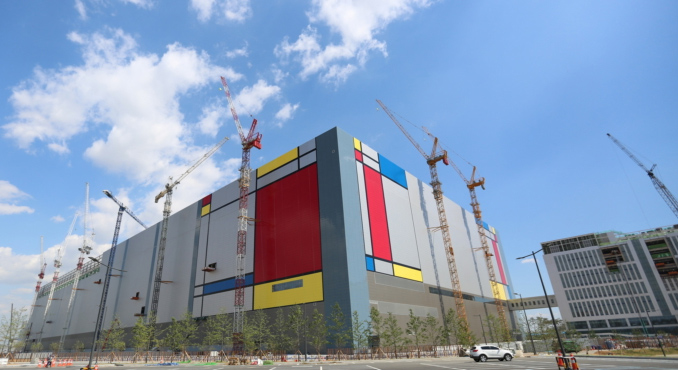Power Outage at Samsung’s Fab Destroys 3.5% of Global NAND Flash Output For March
by Anton Shilov on March 16, 2018 7:00 AM EST
A half-hour power outage at Samsung’s fab near Pyeongtaek, South Korea, disrupted production and damaged tens of thousands of processed wafers. Media reports claim that the outage destroyed as much as 3.5% of the global NAND supply for March, which may have an effect on flash memory pricing in the coming weeks.
The outage happened on March 9 and lasted for about 30 minutes, according to a news story from Taiwain-based TechNews that cites further South Korean reports. The report claims that the outage damaged 50,000 to 60,000 of wafers with V-NAND flash memory, which represent 11% of Samsung’s monthly output. The report further estimates that the said amount equates to approximately 3.5% of global NAND output, but does not elaborate whether it means wafer output or bit output.
Samsung uses its fab near Pyeongtaek to produce 64-layer V-NAND chips used for various applications. The fab is among the largest flash production facilities in the world and therefore any disruption there has an effect on the global output of non-volatile memory. Meanwhile, since production lines have not been damaged and the fab is back online, the significance of such an effect is limited.
Power outages tend to happen on various semiconductor plants and at times they harm production wafers. Typically, companies can deal with the situation and unless manufacturing lines get damaged, major shortages of memory never happen if problems at fabs do not occur in peak seasons when manufacturers are building up stocks of new products. According to the report, Samsung has a stockpile of NAND chips, which is expected to enable to company to fulfill its short-term shipments commitments.
Samsung itself has already produced volumes of its latest Galaxy S9/S9+ smartphones it needed to support channel sales in the coming months, therefore it is not going to require massive amounts of NAND memory in the coming weeks. Meanwhile, other major consumers of NAND will start to build up inventory of memory only later this year when they start to prep for product launches in August or September.
Related Reading:
Source: TechNews










62 Comments
View All Comments
Reflex - Friday, March 16, 2018 - link
It is cheaper to insure against losses than it is to build what would effectively be a small power plant to keep a facility of this scale online. Especially since the power plant would be rarely used yet would still require ongoing maintenance, testing, etc.CoreLogicCom - Friday, March 16, 2018 - link
If you're going to build a power plant to keep the facility online during a power outage, why wouldn't you just run the facility with the power plant 100% of the time? Then you don't care about street power. Not sure a power plant to run this type of facility wouldn't itself be an expensive undertaking (we talking a nuclear power plant?), but its certainly a realm of possibility.close - Monday, March 19, 2018 - link
There are gas turbines capable of generation ~600MW per unit. But building a powerplant to generate 100MW would cost well above $100 million.titanmiller - Friday, March 16, 2018 - link
Sounds like they need Tesla Powerpacks to backup their power supply. Apparently their current UPS strategy wasn't enough.chaos215bar2 - Friday, March 16, 2018 - link
Would it have killed you to add "for March" to the headline, so it actually said something meaningful?Ryan Smith - Friday, March 16, 2018 - link
That one is completely our fault and has been corrected. Thanks!inighthawki - Friday, March 16, 2018 - link
The amount of retardism in this comments section is beyond astounding.IntelUser2000 - Friday, March 16, 2018 - link
Lack of knowledge doesn't fit the definition of retarded.DanNeely - Friday, March 16, 2018 - link
Whatever you do, never look at the comments on an Intel/Amd/Nvidia/Android/Apple article on wccftech then.Hurr Durr - Friday, March 16, 2018 - link
And you`ve only posted one.